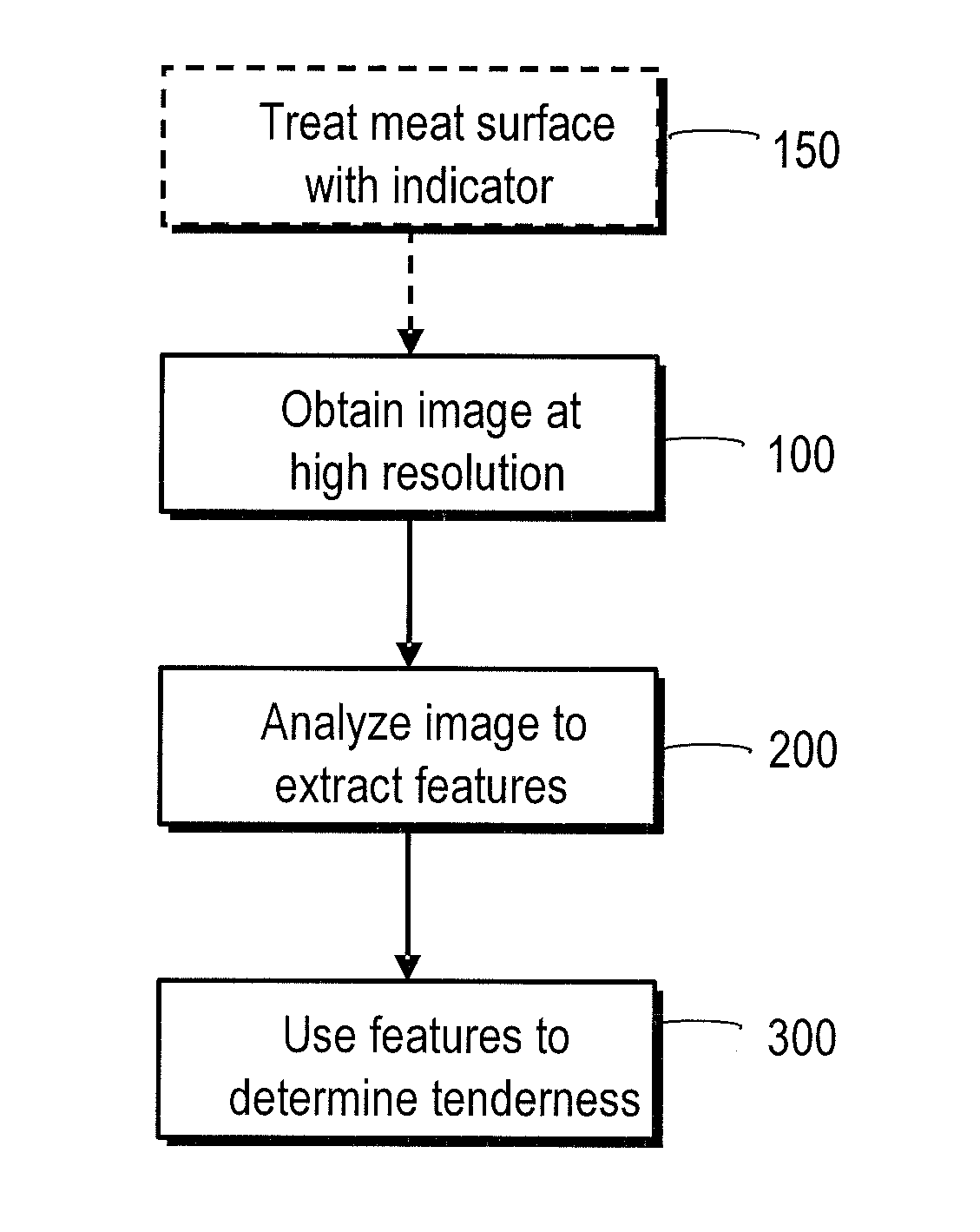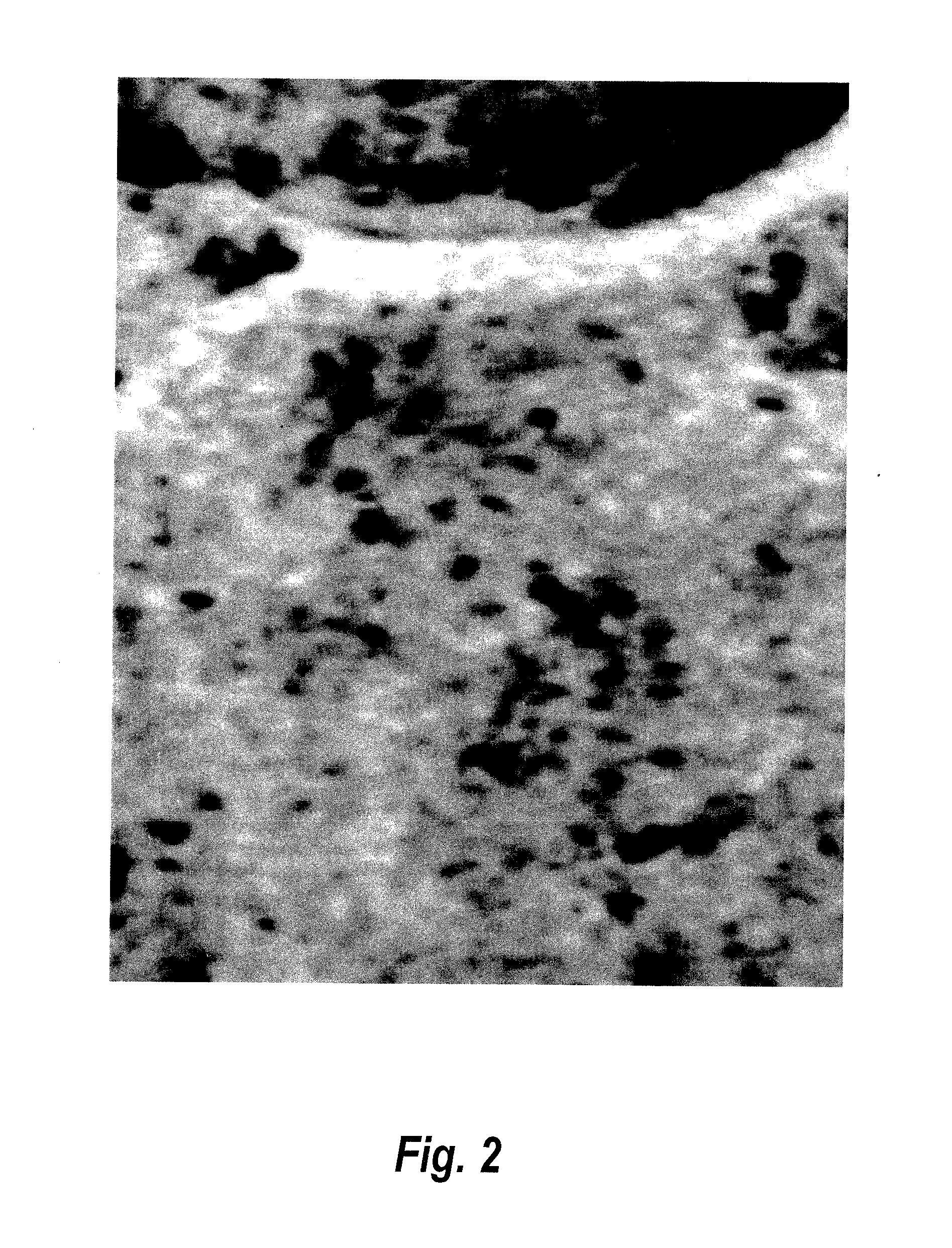Determining Meat Tenderness
a meat tenderness and grading technology, applied in the field of grading of meat tenderness, can solve the problems of high cost, long test duration, and low predictive accuracy of official grading in estimating meat tenderness, and achieve the effect of sufficient accuracy of meat tenderness determination
- Summary
- Abstract
- Description
- Claims
- Application Information
AI Technical Summary
Benefits of technology
Problems solved by technology
Method used
Image
Examples
Embodiment Construction
Overview of the Steps
[0039]An overview of the steps of an embodiment of the present invention are illustrated in FIG. 1, a schematic flow diagram.
[0040]In a first step 100, a high resolution image of a portion of meat is obtained. This image can be captured in the normal optical spectrum, or it can alternatively include portions of the infrared or ultraviolet spectrum. Additionally, in an optional prior step 150, indicators can be applied to the meat sample, wherein such indicators can be used to detect biochemical or physiological components or processes that cannot be determined by direct observation of the meat in the absence of such indicators.
[0041]In a second step 200, these high resolution images are analyzed to extract features. These features can comprise detailed spatial variations in intensity and color. These features can additionally be used to segment the image into parts of an image related to lean meat and non-lean meat, and is especially useful in determining small ...
PUM
 Login to View More
Login to View More Abstract
Description
Claims
Application Information
 Login to View More
Login to View More - R&D
- Intellectual Property
- Life Sciences
- Materials
- Tech Scout
- Unparalleled Data Quality
- Higher Quality Content
- 60% Fewer Hallucinations
Browse by: Latest US Patents, China's latest patents, Technical Efficacy Thesaurus, Application Domain, Technology Topic, Popular Technical Reports.
© 2025 PatSnap. All rights reserved.Legal|Privacy policy|Modern Slavery Act Transparency Statement|Sitemap|About US| Contact US: help@patsnap.com



